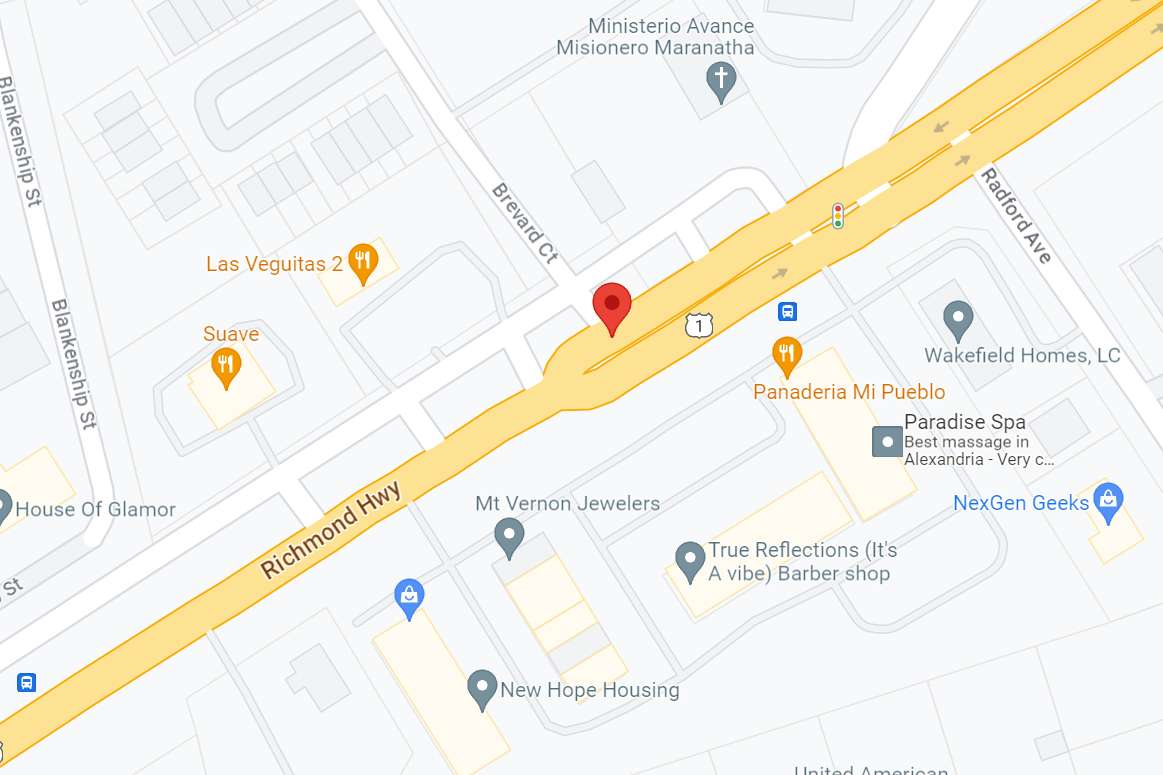
(Updated at 1:20 p.m.) A pedestrian died last night (Friday) after a hit-and-run crash on Richmond Highway (Route 1) in the Woodlawn area of Mount Vernon.
Police officers were called to Richmond Highway near Brevard Court at 10:10 p.m., followed by emergency medical services with the Fairfax County Fire and Rescue Department around 10:12 p.m.
“Vehicle struck a pedestrian. Pedestrian’s face is bloody and shoes were knocked off,” a dispatcher told police, according to scanner traffic on Open MHz.
Eder Machado Aleman, 36, of Fairfax was hit by a driver while attempting to cross Richmond Highway “outside of the crosswalk,” the Fairfax County Police Department said in an update released shortly after noon today (Saturday).
Aleman was transported to a hospital, where he died. There are no crosswalks at Brevard Court or Buckman Road, the closest signalized intersection. The closest crosswalk to the crash site appears to be on the west side of Richmond Highway at Frye Road.
The driver fled the scene, possibly in a white SUV that a witness reported seeing before the crash, the FCPD said. The vehicle was last seen headed south on Richmond Highway, police said on the scanner.
The crash shut down Richmond Highway in both directions from shortly before 10:30 p.m. until around 1:30 a.m. today (Saturday).
“Detectives continue to work to identify the vehicle involved as well as the driver,” the FCPD said. “Speed and alcohol as factors in this crash are still under investigation.”
Based on state data, this is the seventh pedestrian fatality in Fairfax County this year and the third on Richmond Highway, where a motorcyclist was also killed in May. At this time last year, the county had recorded 14 pedestrian deaths.
In total, there were 32 pedestrians killed in the county in 2022, more than any other year since at least 2010.
All lanes of Rt.1 are now open. Follow our blog for available updates. https://t.co/QsTzdpgf0U
— Fairfax County Police (@FairfaxCountyPD) October 7, 2023
CRITICAL, PROBABLE FATAL, PEDESTRIAN STRUCK, HIT+RUN — Richmond Hwy at Brevard Ct in Woodlawn area of Fairfax Co. Police are looking for either a white pickup or SUV that fled. h/t @RVANOVA01 + @HCBright10 #VATraffic @ffxnow pic.twitter.com/onT5c0DFpS
— Alan Henney (@alanhenney) October 7, 2023
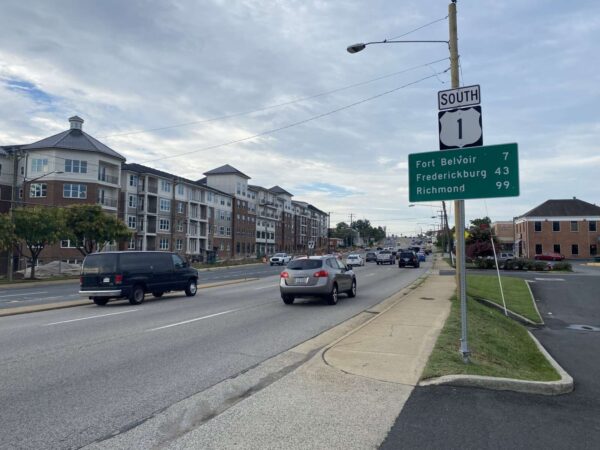
(Updated 10:55 a.m. on 7/26/2023) The ongoing redevelopment of Richmond Highway (Route 1) in Fairfax County has sparked a larger discussion over whether the benefits of road widening projects outweigh their potential harm.
The Virginia Department of Transportation plans to bring improvements to a three-mile stretch in the Richmond Highway corridor in two phases: first from Jeff Todd Way to just north of Frye Road, then from just north of Frye Road to Sherwood Hall Lane.
Notably, the changes will widen Richmond Highway from four to six lanes, which will pave the way for bus rapid transit in the corridor but has garnered some pushback from local community members.
The Coalition for Smarter Growth, which advocates for more “sustainable” transportation methods such as walking, biking and transit in the D.C. region, claimed in a recent press release that “wider roads fail, and the public knows this.”
CSG’s Northern Virginia Advocacy Manager Sonya Breehey says road widening projects create induced demand, arguing that adding more travel lanes incentivizes more people to drive and increases congestion in the long run, despite offering short-term relief.
“The idea is, we get stuck in traffic, so we add travel lanes,” Breehey said. “It’s easy for a few years, but then those travel lanes fill back up and then everybody’s clamoring again for more road widening. It’s a cyclical problem.”
Rep. Don Beyer, who represents the county’s Route 1 area in Congress, told FFXnow in an exclusive interview that he supports road widening projects.
“I think [road widening projects] are an important part of congestion relief,” Beyer said. “There’s an alternative argument…that they will fill up as fast as you build them. That’s certainly been largely true in the metro D.C. area for a long time…but at the same time, I don’t know if it’s still true today.”
In addition to adding travel lanes, the Richmond Highway project reserves median space for future lanes dedicated to The One, a bus rapid transit system that aims to outpace traditional bus services with dedicated lanes and fewer stops.
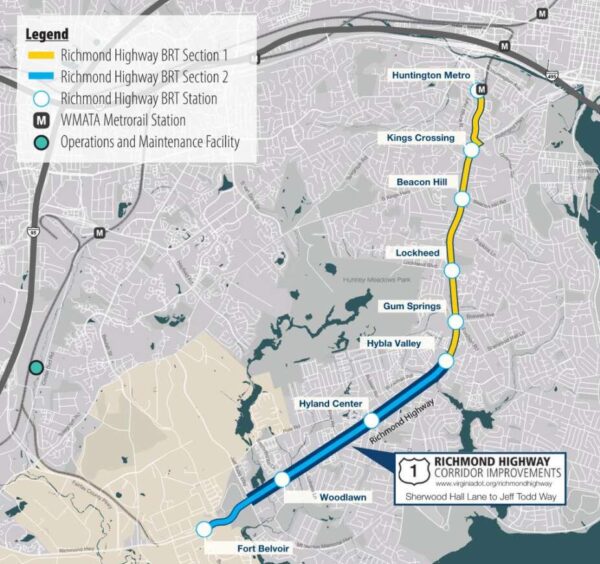
With the BRT expected to be operational in 2030, the Northern Virginia Transportation Commission announced last month that the Commonwealth Transportation Board approved $10 million to help implement the bus system from Fort Belvoir to the Huntington Metro station.
“This billion-dollar investment in a new state-of-the-art transportation system and in the communities along Richmond Highway will revitalize the area and provide more safe, convenient and dependable transportation options for the people who live here,” Mount Vernon District Supervisor Dan Storck wrote in a statement.
Storck says road widening can only be “done right” if it is “in coordination” with “walkable, bikeable communities and mass transit.” Read More
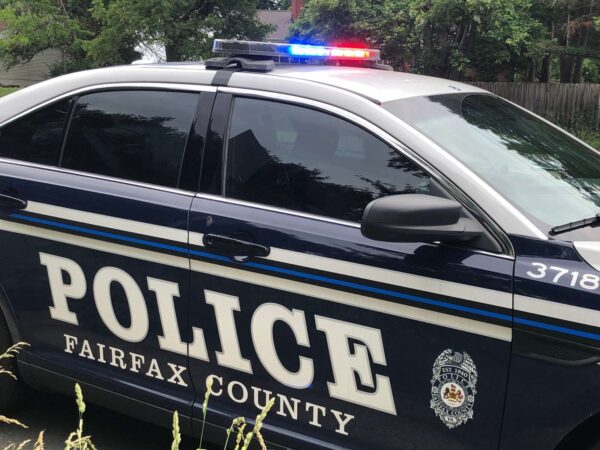
(Updated at 4:10 p.m.) The long-fought activism of one local resident has culminated in the Fairfax County Police Department changing its approach to publicly identifying where crimes occur.
Arlington-based blogger Dave Statter announced on Wednesday, July 12 that Police Chief Kevin Davis has committed to having FCPD public information officers and social media channels use community names, rather than postal addresses, in public safety announcements, clearing up decades of confusion.
A crash in the Fort Belvoir area, for instance, will no longer be described as happening in Alexandria, when the city’s limits are almost 10 miles away.
(1) NEW: My battle of 40 years is over. 2 weeks ago @ChiefKDavis committed to having @FairfaxCountyPD stop using phrases like "Alexandria/Falls Church section of Fairfax County". Instead, they'll use community names within the county. As you can see it has already begun. (more) pic.twitter.com/wCy4tTeTHP
— Dave Statter (@STATter911) July 12, 2023
Known for his coverage of fire, EMS and police issues on Twitter and his blog, Statter argues that relying on postal addresses when informing the public of crime and safety incidents leads news outlets to share “imprecise” reports that associate murders or robberies in the wrong jurisdiction.
He says this issue is most relevant in Falls Church and Alexandria, two independent cities that share often unclear boundaries with Fairfax County.
The frequent conflation of the two cities with Fairfax County stems from the U.S. Postal Service providing a large swath of Fairfax County residents with Falls Church and Alexandria addresses, Statter claims. These addresses are provided to news outlets by PIOs when pinpointing the location of a crime, giving “people the impression that more crime was occurring in Alexandria [and Falls Church] than what was actually occurring,” Statter told FFXnow.
“The postal service created these artificial boundaries that don’t align with the real political boundaries that are on the map,” Statter said. “And you will often find a national story that says something that occurred in a town somewhere, but it really didn’t occur in that town — it was outside that town in a different jurisdiction. So it’s a problem that people have ignored for many years. I’m trying not to let them ignore it.”
The “general confusion” around city and county limits has also left many residents scratching their heads over where they really live and generated constant citizen inquiries to local governing bodies, Falls Church Communication Director Susan Finarelli says.
“People try to pay taxes to the city of Falls Church when, in fact, they live in Fairfax County,” Finarelli said. “…It is something that City of Falls Church government employees deal with all the time. I even copy and paste a statement of, ‘Oh, thank you so much for your email. Your address is actually in the Fairfax County part of Falls Church. Here’s how you can contact Fairfax County for that service.'”
To remedy this issue, which he says is not only endemic to Northern Virginia but the entire country, Statter has spent 41 long years advocating for PIOs and news outlets to instead use community and neighborhood names, such as Bailey’s Crossroads or Mount Vernon. Read More
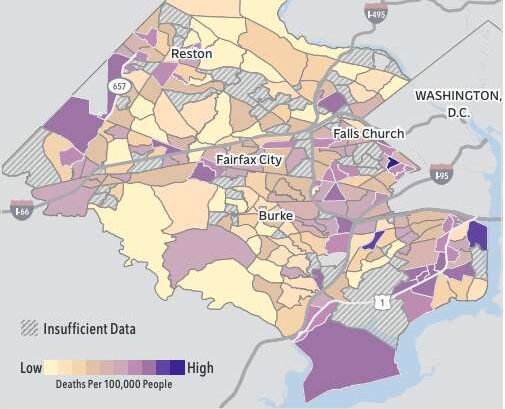
Black residents have experienced worse health outcomes than other populations across Northern Virginia, especially during the COVID-19 pandemic, a new report found.
Commissioned by the Northern Virginia Health Foundation (NVHF) and conducted by the Center on Society and Health at Virginia Commonwealth University, the Fairfax County section of the “Dying Too Soon” report found “stark” disparities across the county in the rates at which people die before the age of 75.
The report attributed the dramatic differences in life expectancies — from 76.5 years to 91.1 years — to an individual’s race, ethnicity and address, reflecting the influence of socioeconomic conditions on health outcomes.
According to the report, a lack of access to health care contributed to 66% of premature deaths in the county from 2015-2019 that were avoidable with preventative measures or treatment.
Throughout Northern Virginia, premature deaths are more concentrated within “islands of disadvantage,” where residents experience poor living conditions, higher mortality rates, and food and housing insecurity, the report says.
Residents of these neighborhoods are more likely to be people of color and immigrants, a disparity resulting from “the region’s history of segregation and systemic racism” and policies that “systematically block access” to health opportunities and increase exposure to unsafe health conditions, the report said.
Prior to the pandemic, Black people in Fairfax County had a premature death rate of 221.0 per 100,000 residents, exceeding the rates for white people (165.8 per 100,000), Hispanics (126.2 per 100,000) and Asians and Pacific Islanders (112.4 per 100,000).
Those disparities were consistent throughout the region, which “exhibits smaller racial-ethnic disparities” that other parts of the U.S., according to the report.
Though Fairfax County is often touted as one of the richest counties in the U.S., with a median income of $133,974, many of the wealthiest census tracts are located just a few blocks from islands of disadvantage.
In fact, the study says one census tract in Springfield has a premature death rate twice as high as that of a census tract in Franconia only two miles away. Each census tract also showed drastically different education and poverty rates and racial and ethnic compositions.
“I don’t think there’s a sense among the general public that these kinds of health inequities exist in a wealthy area like Northern Virginia, which in aggregate is doing quite well and has a very high quality of life,” Dr. Steven Woolf, lead study author and director emeritus of VCU’s Center on Society and Health, told FFXnow. “But when you zoom in like this to see what’s actually happening, neighborhood by neighborhood, you expose these these pockets of disadvantage that we want the public to know about.”
Census tracts with the highest premature death rates were in Seven Corners/Bailey’s Crossroads and Route 1 regions, according to the report’s summary. The study also reported that poverty rates in Seven Corners/Bailey’s Crossroads, Mount Vernon and Oakton “exceeded 20%, higher than poverty rates in countries like Estonia, Lithuania, Peru, Tajikistan, and Uganda.”
The Covid pandemic only worsened inequitable health outcomes, according to data collected in 2020-2021. The report says the county’s islands of disadvantage “experienced higher COVID-19 death rates,” and Northern Virginia as a whole saw “much higher” death rates among Hispanic and Black populations compared to Asian and white groups. Read More
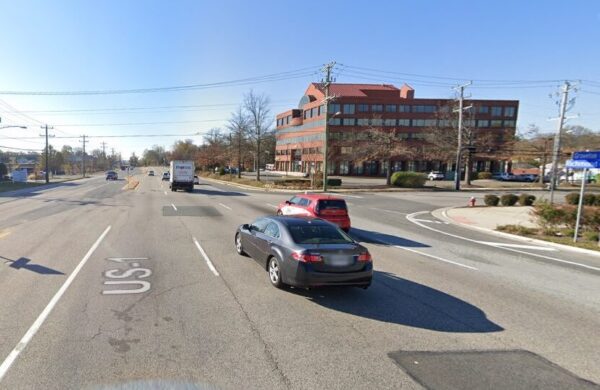
An 18-year-old man from Alexandria has been charged with reckless driving after allegedly crashing into a pedestrian on Richmond Highway in March, killing her.
Shortly before 9:30 p.m. on March 30, Luis Merino Berrios was driving south on Richmond Highway in a 2007 Mercedes C230 when he lost control near Groveton Street, a change from the originally reported location of Clayborne Avenue.
From the Fairfax County Police Department:
The driver of a 2017 Jeep Wrangler attempted to make a left turn from northbound Richmond Highway onto Groveton Street. Detectives determined Berrios was traveling at an excessive speed. He attempted avoidance maneuvers, lost control of his Mercedes, and struck the Jeep Wrangler. Berrios’s vehicle spun several times before leaving the roadway striking Samantha Jennings-Jones who was walking on the sidewalk.
Jennings-Jones was declared dead at the scene. She was 36.
Berrios was charged today (Thursday) and released on a summons, which means he’s still legally allowed to drive, the FCPD said.
Police said they didn’t have the exact speed Berrios was driving, but it was “excessive” for that section of Richmond Highway, which had a 45 mph speed limit.
Starting on Tuesday (May 23), the speed limit will be dropped to 35 mph in response to years of concerns about the roadway’s safety. Another pedestrian was killed on Route 1 just a week after Jennings-Jones died, and earlier this month, a motorcyclist was killed in the Lorton area.
According to her obituary, Jennings-Jones was working in the White House Office of the National Cyber Directorate when she died. She had a husband and two cats.
“Sam was a firm believer that friends are the family you choose, and she will be missed by the many friends and colleagues whose lives she touched and was such a big part of,” the obituary said.
Photo via Google Maps
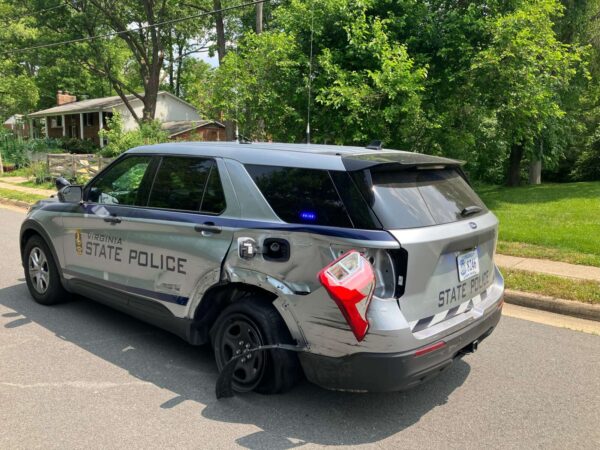
A 27-year-old man from Maryland has been arrested following a police pursuit on Route 1 (Richmond Highway) that extended from Prince William County into Mount Vernon.
Based on a preliminary investigation, the man was driving a GMC Yukon that had been reported stolen from a Koons dealership on Richmond Highway at 10:30 a.m., a Prince William County Police Department spokesperson said.
When a Prince William County police officer approached the man and told him he was under arrest, the driver fled. Since the situation didn’t meet the department’s standards for pursuing a suspect, the officer instead alerted Virginia State Police and Fairfax County police to the fleeing vehicle.
A Virginia State trooper located the vehicle around 10:49 a.m.
“The GMC was on Route 1 in Prince William County heading north towards the Fairfax County line,” the VSP said. “The trooper activated his emergency lights and siren to initiate a traffic stop, but the GMC refused to stop and sped off.”
According to scanner traffic, the GMC drove the wrong way on Richmond Highway, heading north in the southbound lanes. During the chase, the driver “rammed” the pursuing trooper’s marked patrol SUV three different times, ultimately disabling the vehicle, the state police said.
Prince William County police officers, who were staying in sight of the chase to provide support, saw the GMC “make intentional contact” with the trooper’s cruiser, the Prince William police spokesperson said.
At 10:56 a.m., the driver bailed out of the GMC at Pole Road and Highland Lane in the Mount Vernon area, where he was taken into custody with the help of Prince William County police and a Fairfax County sheriff’s deputy.
The driver and the trooper were both taken to Inova Mount Vernon Hospital for medical evaluations “as a precautionary measure,” but no injuries were reported, state police said.
Charges from state police and Prince William County are pending, as an investigation into the case continues.
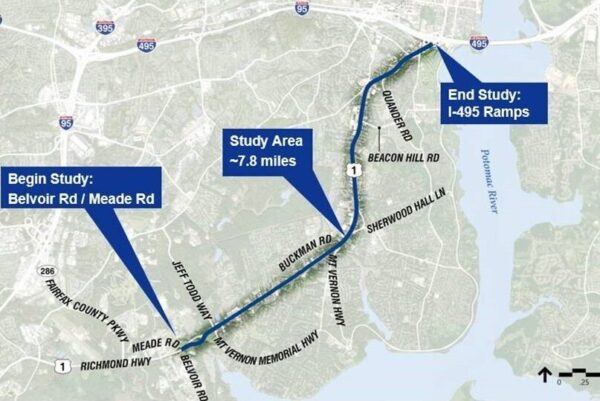
The speed limit on Richmond Highway (Route 1) has been permanently lowered through much of Fairfax County.
Starting next Tuesday (May 23), the legal limit will be reduced from 45 to 35 mph along a roughly 7-mile stretch between the Alexandria City limits at the Capital Beltway (I-495) and Jeff Todd Way/Mount Vernon Memorial Highway, the Virginia and Fairfax County transportation departments announced yesterday (Monday).
The departments said the change is designed “to optimize safety and operations for pedestrians, bicyclists, drivers and transit users” along a corridor that routinely sees devastating crashes.
Just this year, there have been at least 102 vehicle crashes on the Fairfax County section of Richmond Highway, injuring 75 people, according to state data. Prior to 2018, the total number of crashes consistently topped 400, peaking at 508 crashes in 2012.
So far in 2023, three people have been killed on the roadway: two pedestrians and a motorcyclist. Since 2011, there have been about 37 fatalities.
The Virginia Department of Transportation recommended in July 2022 that the speed limit be lowered after a year-long speed study found crashes occur more frequently on Richmond Highway than other primary highways in Northern Virginia, on average.
“The team also found that Richmond Highway between Buckman Road/Mount Vernon Highway and the Alexandria southern city limits had a higher incidence of pedestrian [and] bicycle crashes and speed-related crashes compared to other sections of Richmond Highway,” VDOT said.
However, the study recommended maintaining the existing 45-mph speed limit in the Fort Belvoir area from Belvoir Road to Jeff Todd Way. That 0.75-mile stretch had a lower crash rate, though about 50% of vehicles still exceed the speed limit, according to VDOT.
At a public meeting last summer, some community members raised concerns about the lower speed limit increasing congestion and questioned how effectively it’ll be enforced, but VDOT officials said the study indicated the change will have a “minimal” impact on traffic and allow tougher penalties on drivers who violate the limit.
Even a small decrease in vehicle speeds can lead to fewer serious crashes, according to the National Highway Traffic Safety Administration. A 5-mph reduction from 40 mph, for example, will produce an estimated 34% reduction in crashes with injuries.
Signs showing the new speed limit will be placed along Richmond Highway on May 23, VDOT said. A final report on the speed study is expected to be finished around the middle of this year.
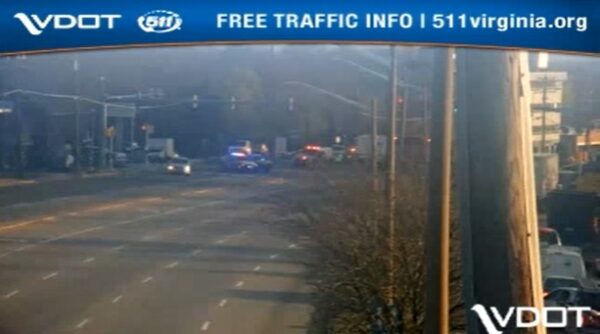
(Updated at 7:50 p.m.) Several people have been hospitalized after a crash on Richmond Highway (Route 1) in Groveton that involved four different vehicles, including a Fairfax County Fire and Rescue Department truck.
One person sustained injuries considered life-threatening, the Fairfax County Police Department says.
Police units were dispatched to a fire department accident with injury at the intersection with Memorial Street near Beacon Center around 5:19 p.m., the FCPD confirmed.
Based on scanner traffic on OpenMhz, at least six people were transported to Inova Fairfax Hospital, including two people from a car and four from the fire department truck.
Richmond Highway has been shut down in both directions, and police advise avoiding the area.
The fire department directed comments to FCPD.
Officers are at Richmond Hwy & Memorial St in Groveton for a crash involving a @Ffxfirerescue truck and three vehicles. Several people taken to the hospital, one with life threatening injuries. Richmond Hwy is closed at Memorial St. Avoid the area. #FCPD pic.twitter.com/ihWkO2DG7x
— Fairfax County Police (@FairfaxCountyPD) March 23, 2023
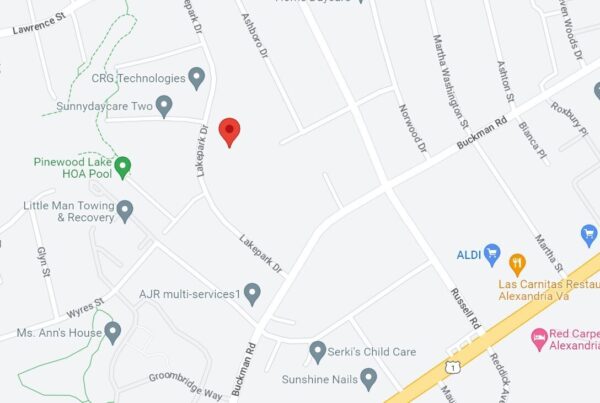
Undeveloped land in Mount Vernon near Richmond Highway that had been eyed for an elementary school is now being considered for an early childhood education center instead.
As part of its approval of the latest Capital Improvements Program (CIP) on Feb. 9, the Fairfax County School Board voted unanimously to reallocate $500,000 in bond funding to the proposed center, which will take the place of a planned Route 1/Pinewood Lakes elementary school.
The money will help Fairfax County Public Schools start planning and designing the facility earlier than previously anticipated in the spending plan, according to School Board Vice Chair Tamara Derenak Kaufax, who represents the Franconia District and proposed the amendment.
“Based on the current budget, this project would have available approximately 15,000 to 20,000 square feet for dedicated classroom use,” Derenak Kaufax said during the board meeting (at the 5:17:33 mark). “The space would allow for up to 400 pre-K, Early Head Start or preschool special education students to gain that critical, strong educational start.”
The center will be located in the Woodlawn neighborhood on 10 acres of land owned by the school board next to Buckman Road near Lakepark Drive. The board also has a smaller, adjacent site at 4300 Keswick Road, but only the larger parcel will be used, Derenak Kaufax told FFXnow.
FCPS first proposed building an elementary school to serve the northern Route 1 corridor in 2013. Voters approved a school bond referendum that November that included nearly $21.2 million for the project — funds still listed in the newly approved CIP for fiscal years 2024-2028 as “projected future project spending.”
However, after the referendum passed, the Department of Defense moved over 11,000 jobs in the area to Fort Belvoir, and FCPS got federal grant funds to build an elementary school on the military base, “alleviating the immediate capacity need” for the Route 1 school, Derenak Kaufax told the school board.
FCPS administrators wrote a report last spring recommending the site be used for a standalone pre-kindergarten center, and Superintendent Michelle Reid brought the proposal to the school board on Sept. 12.
While Fairfax County has seen a general dip in child care options during the pandemic, the need for more early childhood education capacity, particularly in the Richmond Highway corridor, was “significant” even before Covid, Mount Vernon District School Board Representative Karen Corbett-Sanders said. Read More
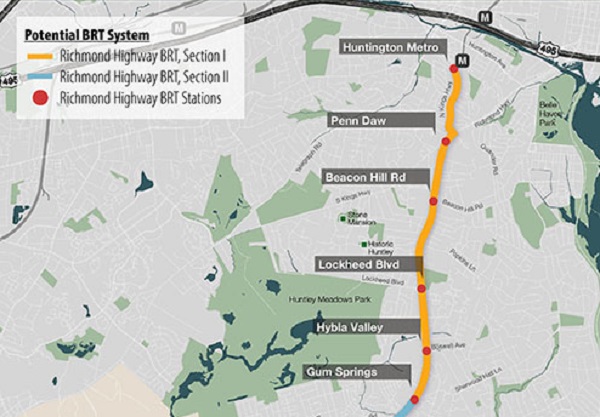
Fairfax County is going back to the drawing board for the names of its proposed Richmond Highway bus rapid transit (BRT) stations.
The Fairfax County Department of Transportation says it is looking for feedback on names for three stations “in response to community ideas about better ways to reflect station location and community character,” according to a news release published today (Tuesday).
The three stations being revisited are:
- Station #2: currently named Penn Daw, located at North Kings Highway and South Kings Hwy
- Station #5: currently named Hybla Valley, located at Boswell Avenue and Fordson Road
- Station #6: currently named Gum Springs, located at Sherwood Hall Lane
Dubbed “The One,” the planned BRT service will ultimately consist of nine stations in the Route 1 corridor, starting at the Huntington Metro station and ending in Fort Belvoir past the Woodlawn Plantation.
To gather input on what the stations should be called, FCDOT will host an open house at the Hybla Valley Community Center (7950 Audubon Avenue) from 6:30-8 p.m. on Wednesday, Oct. 12.
An online survey will also launch that day and stay open through Nov. 4.
Not expected to begin operations until 2030, the BRT will use dedicated bus lanes built in the median of Richmond Highway after the Virginia Department of Transportation widens the roadway from four to six lanes.
This summer, the county asked the public to weigh in on design elements and artwork at the future stations. The designs will be finalized by a Richmond Highway BRT Executive Commission in late spring 2023, according to FCDOT.

